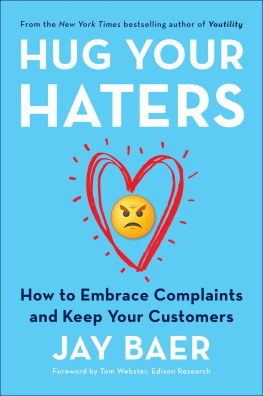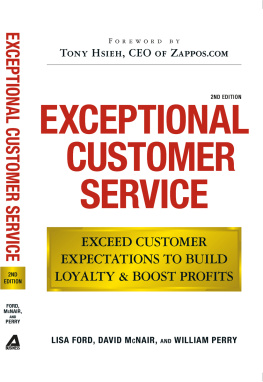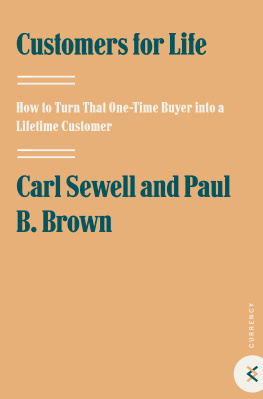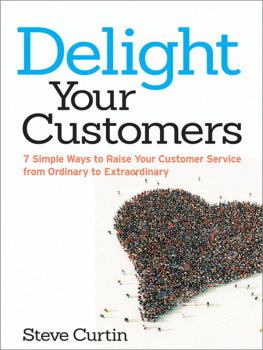Penguin supports copyright. Copyright fuels creativity, encourages diverse voices, promotes free speech, and creates a vibrant culture. Thank you for buying an authorized edition of this book and for complying with copyright laws by not reproducing, scanning, or distributing any part of it in any form without permission. You are supporting writers and allowing Penguin to continue to publish books for every reader.
FOREWORD
by Tom Webster, Edison Research
I n my businessconsumer insightsI get all kinds of requests. Some clients ask me to prove x for them. Those kinds of requests, to paraphrase A. E. Housman, use research like a drunkard uses a lamppost: for support rather than illumination. But all market research can essentially be boiled down to three categories: comparative research (how are we doing?), firefighting (what the heck do we do?), and blue sky research (what could we do?). The latter is my favorite type of project because we get to be involved in the discovery of new facts and the exploration of the undiscovered opportunity.
It is, in fact, this undiscovered opportunity that my friend Jay Baer has set out to explore, on your behalf.
When Jay first approached me and my company, Edison Research, he had two provocative questions: How has the proliferation of social media, review sites, and other online forums changed consumer expectations of what good customer service really means? When interactions between brands and humans are played out on a public stage, how must brands perform in order to satisfy not only the customer but the customers audience?
With our help, Jay set out to discover the answers to these questions, and many more, in order to provide illumination, not support. Together, Jay and Edison designed a significant national research study to examine current expectations of customer service, how they differ by channel, and the value of responding to complaints, even when those complaints seem unresolvable.
The answers surprised us all. To Jays endless credit, the book he thought he might write turned out to be a very different book indeedand a very, very powerful one. The results of the study challenged my own preconceptions about responding to online complaints, and caused me to rethink even how my own business chooses to respond, or not, to haters.
And heres something that might unsettle you: your business has haters, too. Every interaction between brand and human has the potential to delight or enragein short, to become memorable. Today, with the widespread usage of social media, those memories can live on, and live in public, for a very long time. Customer service has become a spectator sport, and your online panel of judges can award or deduct points for speed, execution, and style.
Because that spectator sport can become ugly, many businesses essentially opt out of the game, figuring that its rigged. I know that was my inclination before Jay embarked on this exploration. But I was wrong. It doesnt matter how rigged the game may seem, how vitriolic the haters may be, or how futile it may seem to please them. The game is worth playing.
You might be tempted to write off Hug your haters as a trite saying, a Zen koan, or a beatitude for our digital times. But in the pages that follow, you wont find cherry-picked anecdotes or feel good mantras imploring you to turn the other cheek. Jay does not argue from anecdotal information, but from research. And he provides context for that research from some of the worlds most successful brands and small businesses, and shows how they have made hugging their haters a systematic process, with tangible results. Jay offers some remarkable case studies of hater hugging and the hard-dollar value that this practice brings to companies that embrace... embracing.
What I hope you get from this book is what I got from this book: a change in mind-set. Hugging your haters takes some work. You might be tempted to think about the effort required to monitor and respond to complaints in social media, review sites, and online message boards as a loss center, a cost of doing business. What Jay convincingly argues, however, is that hugging your haters is not a cost. Its a profit center. Hugging your haters makes good business sense. Its worth it to do the work, because the work pays off. And the most successful hater huggers have a competitive advantage and a true strategic moat against their competitors.
I hope this book has the kind of impact on you that it did on me. And if it does, may I humbly suggest one simple thing: when you finish this book (for the first time), log on to Twitter, Facebook, Yelp, TripAdvisor, Amazon, or anywhere else your company has been hated and hug your most recent hater.
Doesnt that feel better?
Introduction
I n business and in life, each of us is confronted with people who are perturbed, displeased, disappointed, or downright angry. These people take the time to complain, and let us know where and how we fell short in their eyes.
They are the haters. Their intentions may vary, but there are more of them than ever, and they are louder than ever. And thats good news.
Indeed, what youll discover in this book is that the rise of the haters is an enormous opportunity for businesses and companies of every type and every size. Ive seen this firsthand, as an adviser to some of the worlds largest companies and an investor in many small start-ups. Business is more competitive than its ever been, at every turn and in every way, and differentiation is tough, as competitors can and will eventually mimic your products and ape your pricing. But customer experience and customer service remain fertile opportunities for standing above the mass of competitors. I wrote this book to help all business owners and managers understand how to turn customer service into marketing, and use it as your true competitive advantage.
You may be thinking that this book is unnecessary. Youre already wonderful to your customers. After all, according to a study by Forrester Research, 80 percent of businesses believe they deliver superior customer service.
But that same study shows that just 8 percent of customers agree that service is superior.
As youll see in these pages, yesterdays great is todays mediocre. What previously would have been considered adequate attention to complaints and haters can now become a major customer experience deficiency that can be exploited by your competitors.
You may be thinking that you already know everything there is to know about customer service, especially if you are actively involved in interacting with your customers every day. And a few years ago, you probably would have been correct. Customer service changed little between the invention of the toll-free phone number in the 1970s and the embrace of e-mail as a contact mechanism in the late 1990s.
The same is true in the field of customer service books and counsel. There are dozens of books on the shelves about customer service, and I cite some of them here. But many of those books, while interesting and worthy of praise, are not relevant in the way they once were. Mobile and social technology, sociological and behavioral changes, and heightened consumer expectations have radically shifted what it means to provide great customer service, and the resources and processes you need to do so.













